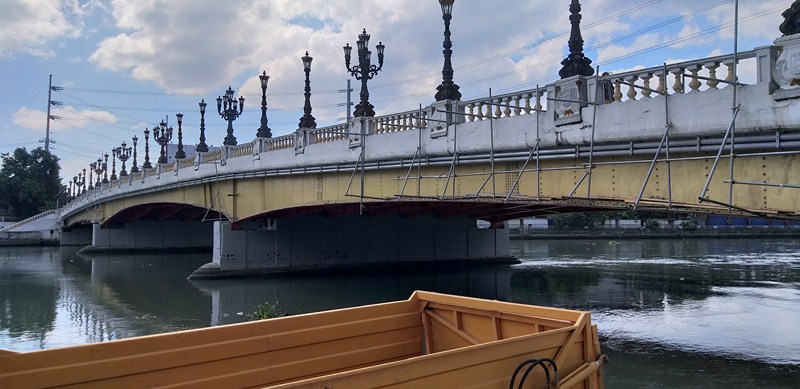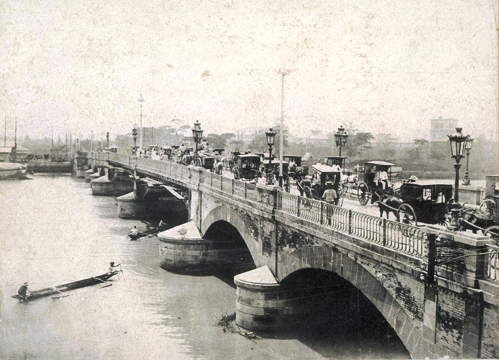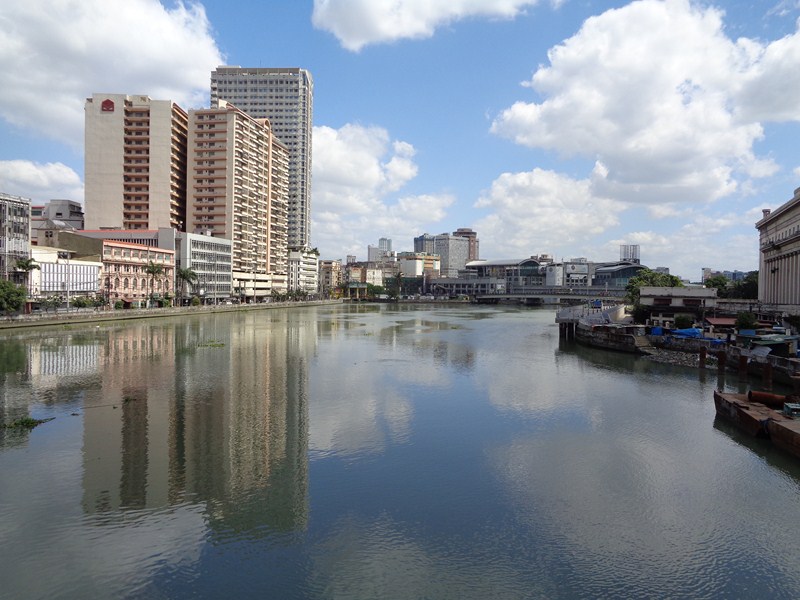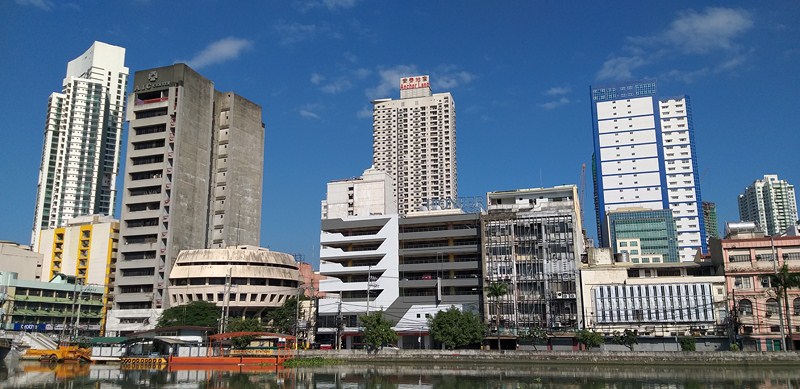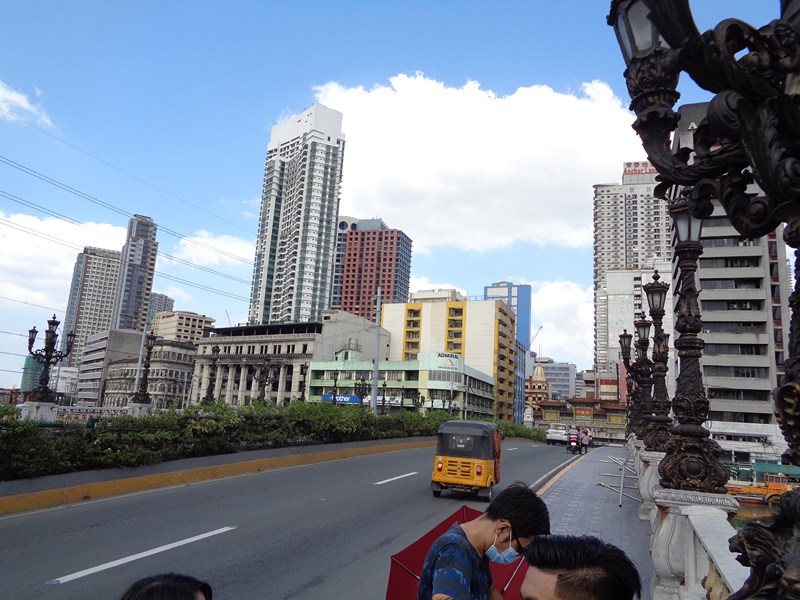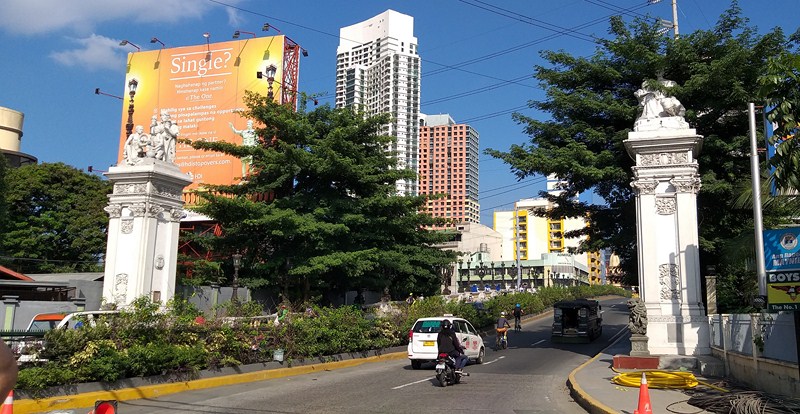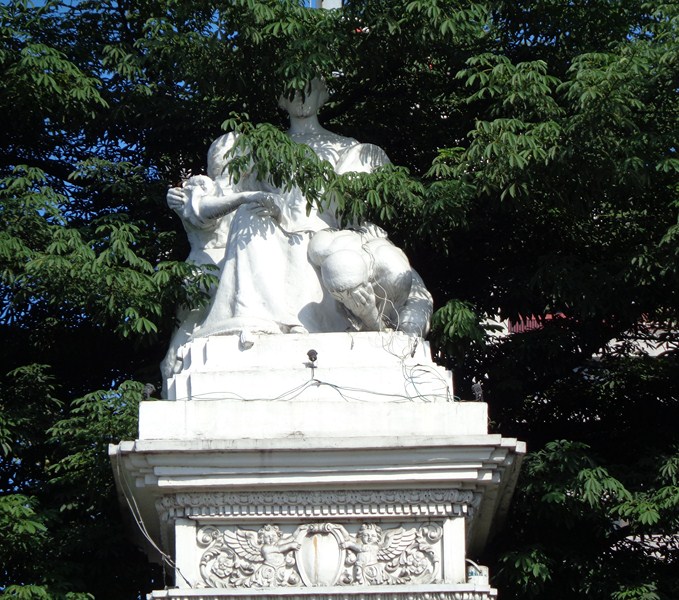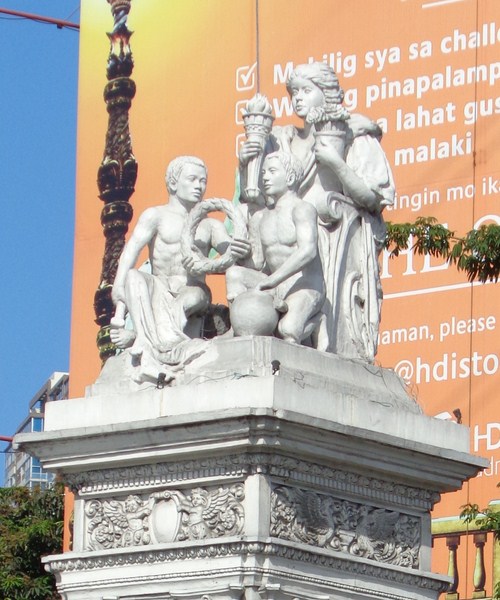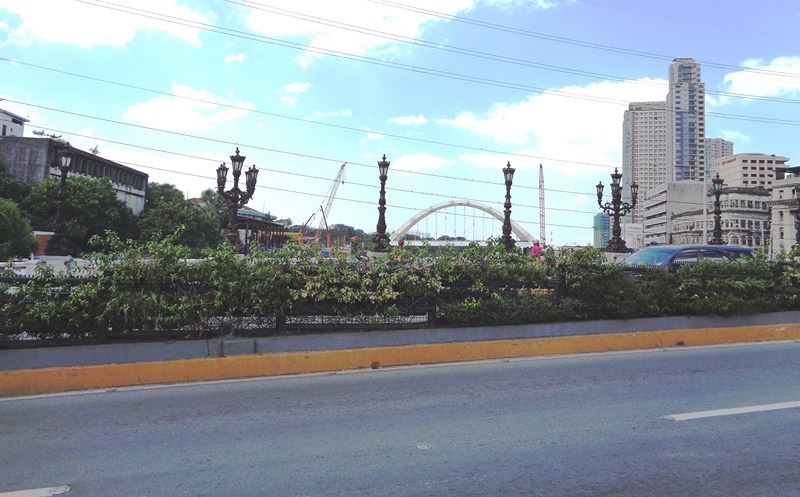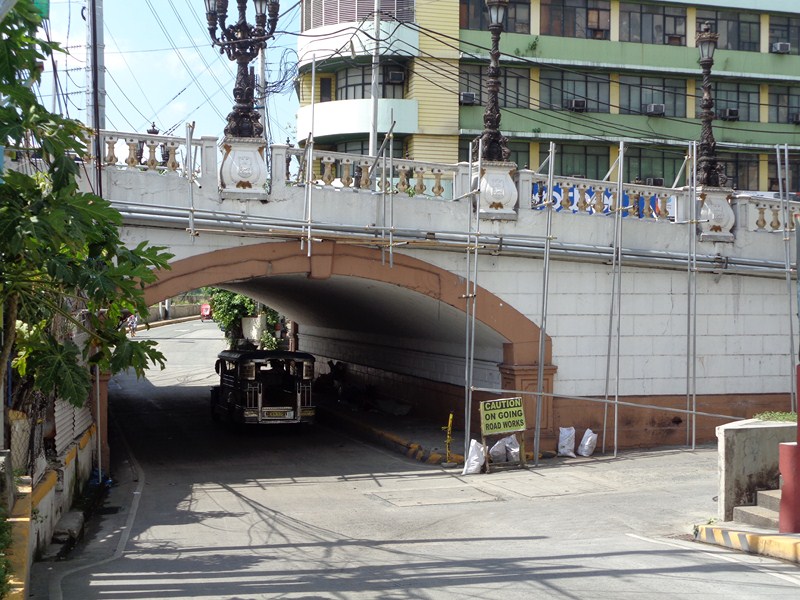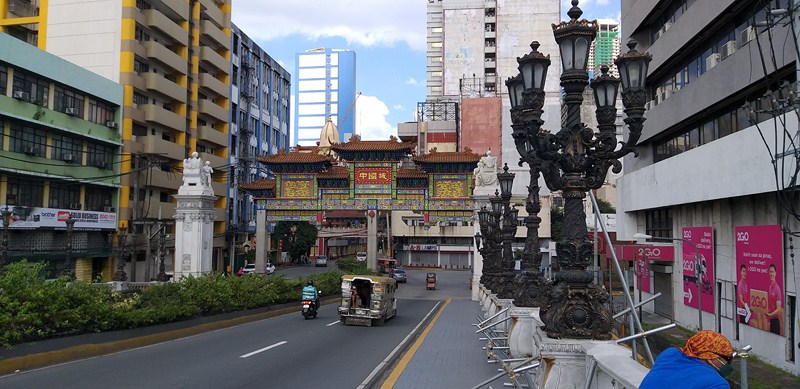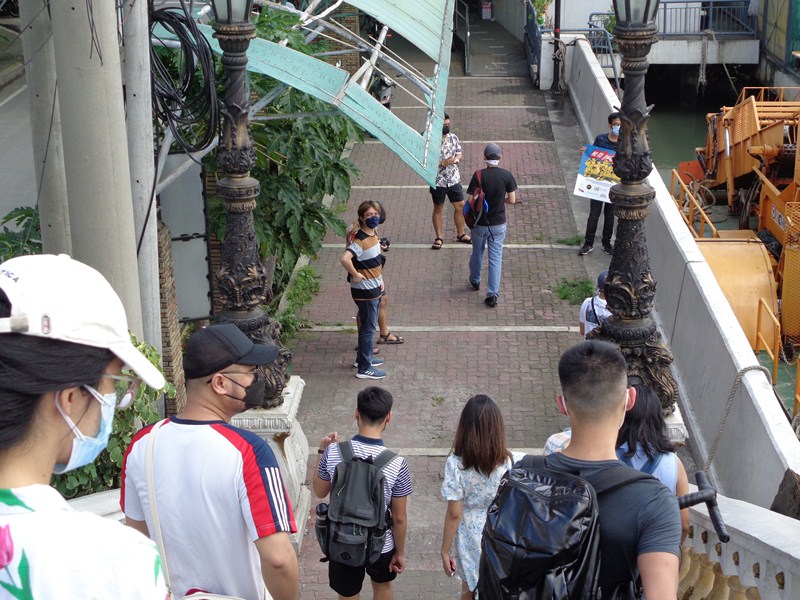One of the highlights of my joining (with my son Jandy) the Pasig River Heritage Tour (hosted by Renacimiento Manila headed by its president Mr. Diego Torres), aside from our walking tour of Escolta, was my up close and personal crossing of the iconic and historic Jones Bridge (official name: William A. Jones Memorial Bridge). This arched girder bridge, spanning the Pasig River, was once described as Manila’s “Queen of Bridges.”
Check out “A Walking Tour of Escolta”
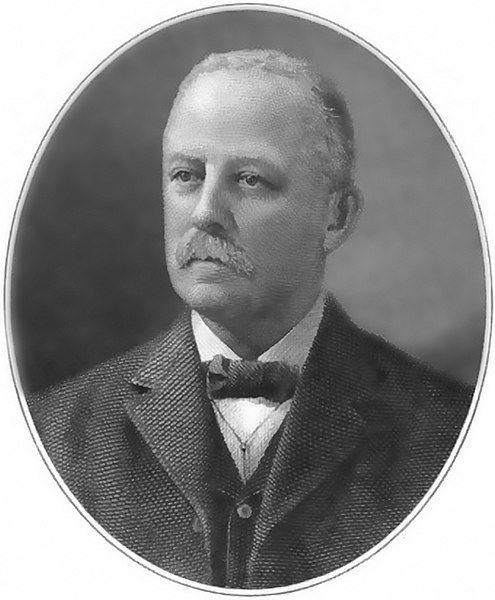
Virginia representative William Atkinson Jones, author of the Philippine Autonomy Law of 2016 (Jones Law), in his later years
The fourth bridge to span the Intramuros-Binondo Crossing, it was named after the Virginia legislator William Atkinson Jones. Jones, the chairman of the U.S. Insular Affairs House Committee which had previously exercised jurisdiction over the Philippines, was the principal author of the Jones Law (Philippine Autonomy Act of 1916) that gave the country legislative autonomy from the United States. Jones died in 1918 while the bridge was still being planned.
The bridge was built to replace the historic Puente de España (Bridge of Spain), the first bridge built to cross the Pasig River. Constructed during the Spanish colonial era (opened January 1, 1875), the Puente de Espana was the last incarnation of bridges that span the same location since 1630. Located at one block upriver at Calle Nueva (now E.T. Yuchengco Street), it connected Calle Rosario (now Quintin Paredes Street), at the Binondo district, to Padre Burgos Avenue at the Ermita district. During the heavy rains of September 1914, the central pier weakened, collapsing the middle span of the bridge. The Puente was temporarily kept open using a temporary truss bridge while the new bridge is being constructed at Calle Rosario.
In 1919, a new bridge to replace the much smaller Puente de España was commissioned under the auspices of the City Government of Manila. However, in 1920, the Insular Government, through the Philippine Bureau of Public Works, took over in finishing the bridge’s construction. The construction of new bridges were part of a master plan of Daniel Burnham, who wanted to give emphasis on the rivers of city and likened them to the Seine River in Paris and the canals of Venice. This plan was heavily implemented and supervised by William E. Parsons.
However, upon the passage of the Jones Act, Filipino architect Juan M. Arellano (who also designed the Old Legislative Building, Manila Metropolitan Theater and the Manila Central Post Office), then a member of the Bureau of Public Works, took over and finished the bridge’s final design using French Neo-Classical architecture in the style of the passageways constructed during Haussmann’s renovation of Paris. The bridge was inaugurated in 1921 and, soon after, the Puente de España was dismantled.
Check out “Save the Metropolitan Theater!!!” and “Manila Central Post Office Building”
The first incarnation of the bridge featured three arches resting on two heavy piers embellished with faux-stone and concrete ornaments such as statues of boys on dolphins similar to those on the famed Pont Alexandre III (widely regarded as the most ornate and extravagant in Paris) at the Seine River which Arellano had previously visited. The statues were created by the young, well-known German sculptor Otto Fischer-Credo who previously studied at the Academie der Kunts in Berlin and graduated at the Royal Academy of Arts in Paris.
Check out “The Bridges Along the Seine River ”
Similar to the Parisian Pont, he marked both ends of the bridge with four concrete plinths and commissioned sculptor/painter Ramon Lazaro Martinez to build four statues, collectively called La Madre Filipina (The Philippine Motherland), allegorically representing motherhood and nationhood, which would be placed on the pedestals. Each statue, representing the values espoused in the Jones Law, symbolizes the different aspect of nationhood since the Philippines at the time was transitioning from being a colony of the United States to gaining its independence. The finished, ornate concrete arch bridge rivaled any found in the United States and Europe.
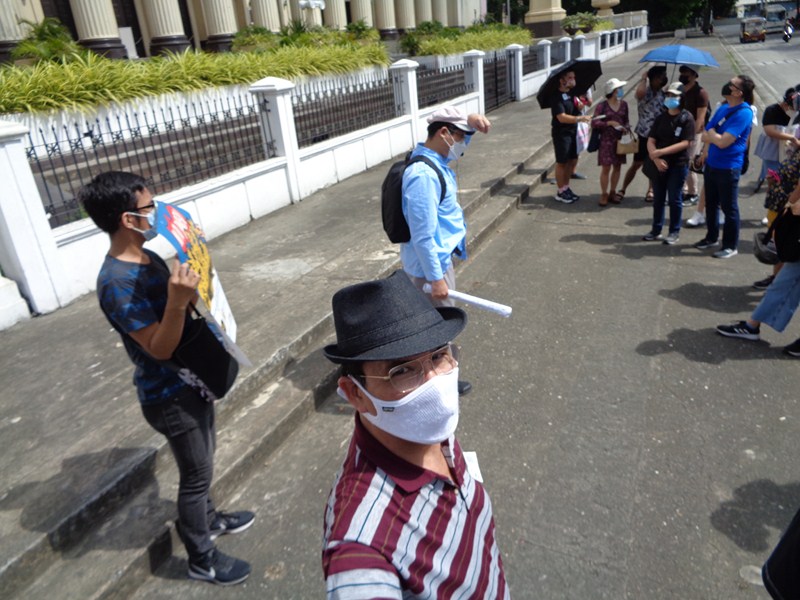
Pasig River Heritage Walk group listening to Mr. Diego Torres (in blue), president of Renacimiento Manila
In 1942, during the Japanese occupation in World War II, the bridge was renamed to Banzai Bridge by virtue of Executive Order No. 41 issued by Philippine Executive Commission Chairman Jorge B. Vargas. During the Battle of Manila, retreating Japanese Army troops bombed the bridge in order to impede incoming American troops. One of the four La Madre statues was permanently lost during the destruction. After the war, while the main bridge itself was being rebuilt, a bailey bridge was set up as a temporary passageway for vehicles.
Following the passage of the Philippine Rehabilitation Act of 1945, the Philippine Bureau of Public Works and the U.S. Bureau of Public Roads reconstructed the Jones and Quezon bridges using large and deep steel girders. However, in an urgent haste to finish its reconstruction, none of its original ornamentation, on either piers and balustrades, were restored, and its Neo-Classical aesthetic were replaced with an unadorned architecture, more practical yet completely unaesthetic, quite banal and modern industrial girder bridge which was a far cry from Juan M. Arellano’s vision. The three remaining La Madre Filipina statues were also removed and its plinths were demolished. The statue representing Gratitude, restored by Anastacio Caedo, was relocated within Rizal Park while the two others (representing Justice and Progress) are relocated at the entrance of the Court of Appeals Main Building.
In 1998, in celebration of the Philippine Centennial Independence, architect Conrad Onglao, commissioned by then-First Lady Amelita Ramos, partially restored the bridge by replacing the post-modern steel design with stone balustrades. During the term of Manila Mayor Lito Atienza, the steel girders were lighted and thematic lamp post were added onto the bridge, which drew mixed reactions. As opposed to its original Neo-Classical design, two granite fu dogs (donated by Tong Tah Trading Enterprise of Singapore) were also added, in 1998, at the base of the bridge’s Liwasang Bonifacio (south) side, giving it a Chinese character.
Check out “Liwasang Bonifacio“
In 2019, the City Government of Manila, under Mayor Francisco “Isko Moreno” Domagoso, announced a ₱20 million (reportedly donated by the Philippine-Chinese Chamber of Commerce and Industry, Inc.) rehabilitation project to “restore” the Jones Bridge to its near-original architecture, using Beaux-Arts architecture similar to that of Pont Alexandre III in Paris, and the return of the three surviving La Madre sculptures that had previously guarded the bridge. The fourth sculpture (Democracy), destroyed during the Battle of Manila, was replicated using the archives of the pre-war Jones Bridge in the National Library of the Philippines.
Jose “Jerry” Acuzar, owner of Las Casas Filipinas de Acuzar in Bataan, was commissioned by Moreno to design and build 80 triple-branched, black, Beaux-Arts-inspired lamp posts (cast from resin instead of metal), similar to those on Pont Alexandre III, for the formerly darkly lit bridge. The four lions (or merlions) on the pedestals of the new lampposts were meant to symbolize the official coat-of-arms of City of Manila, designated to represent the power of the Spanish Empire.
The four plinths which would act as the pedestal for the returning La Madre Filipina statues, were reconstructed. Retrofit and repair works were also done at the steel girders of the bridge. The balustrades of the bridge were painted in a faux marble pattern, with undertones of orange, yellow and gold. The bridge was temporarily closed during the rehabilitation.
The statues of Gratitude (at the southeast portion of the bridge) and the replicated Democracy (at the southwest corner of the bridge) were reinstated at the Ermita side of the bridge on November 23, 2019. Two days later, Jones Bridge was inaugurated and formally opened to the public.
The other two original statues, located at the grounds of the Court of Appeals, were deemed too fragile to be relocated so replicas were made and installed on June 2021 at the Binondo side of the bridge. Progress, symbolizing, labor, education and power, was installed on the northwest portion of the bridge while Justice, symbolizing law and order, and equality under the law, was installed on the northeast side of the bridge.
Jones Bridge has 3 spans, 2 piers in the water and has a length of115 m. (377 ft.), a width of 16.70 m. (54.8 ft.) and has a clearance below of 7.5 m. (25 ft.) at mean tide. It also has 4 lanes (2 per direction) and has a load limit of 20,000 kgs. (20 tons). The bridge rarely suffers from traffic congestion (which usually occurs at the both ends of the bridge due to parking violations) and water buses of Pasig River Ferry Service also habitually pass under it to reach its Escolta Street station.
Every January 9 of the year (the Feast of the Black Nazarene), since 2013, the Metropolitan Manila Development Authority annually closes the bridge from car passage for the Translacion procession, after the Department of Public Works and Highways deemed the nearby MacArthur Bridge unstable to accommodate increasing foot traffic during the festivities. However, starting 2020, the Translacion was rerouted to the recently retrofitted Ayala Bridge.
The bridge served as the backdrop for the 1989 film Jones Bridge Massacre: Task Force Clabio (starring Lito Lapid) which was based on real-life events. The 2007 Filipino film The Promise has a scene in where Daniel (Richard Gutierrez) was tasked to assassinate someone underneath the bridge’s tunnel, although he was unable to do it and sets the man free afterwards. The bridge was also featured in the 2012 Hollywood film The Bourne Legacy (the motorcycle chase starts off here) and the 2021 Philippine romantic fantasy The Lost Recipe.
To encourage people to use the pedestrian lane, the lampposts at the center of the four-lane bridge were removed and replaced by strategically placed barricades covered with plants. The length of the bridge is painted and solar road stud lights were added on the edge and centerline of the bridge. As a safety measures for pedestrians, the walkways are painted with rubberized paint and, to make the bridge more stunning at night, pin lights were installed along the railings and under the girder of the bridge.
The bridge, now a hit in social media, has a cinematic appearance and is a favorite for selfies and pre-nuptial photo shoots. Though, in my opinion, just halfway near the grandeur of the pre-war bridge (the statues of boys playing dolphins at the piers are still missing), it is still a testament to how Manila could regain a sense of its own past and restore its old glory.
Jones Bridge: Quentin Paredes St. Ermita, the City of Manila, Metro Manila, Philippines. Coordinates: 14°35′45″N 120°58′38.3″E

